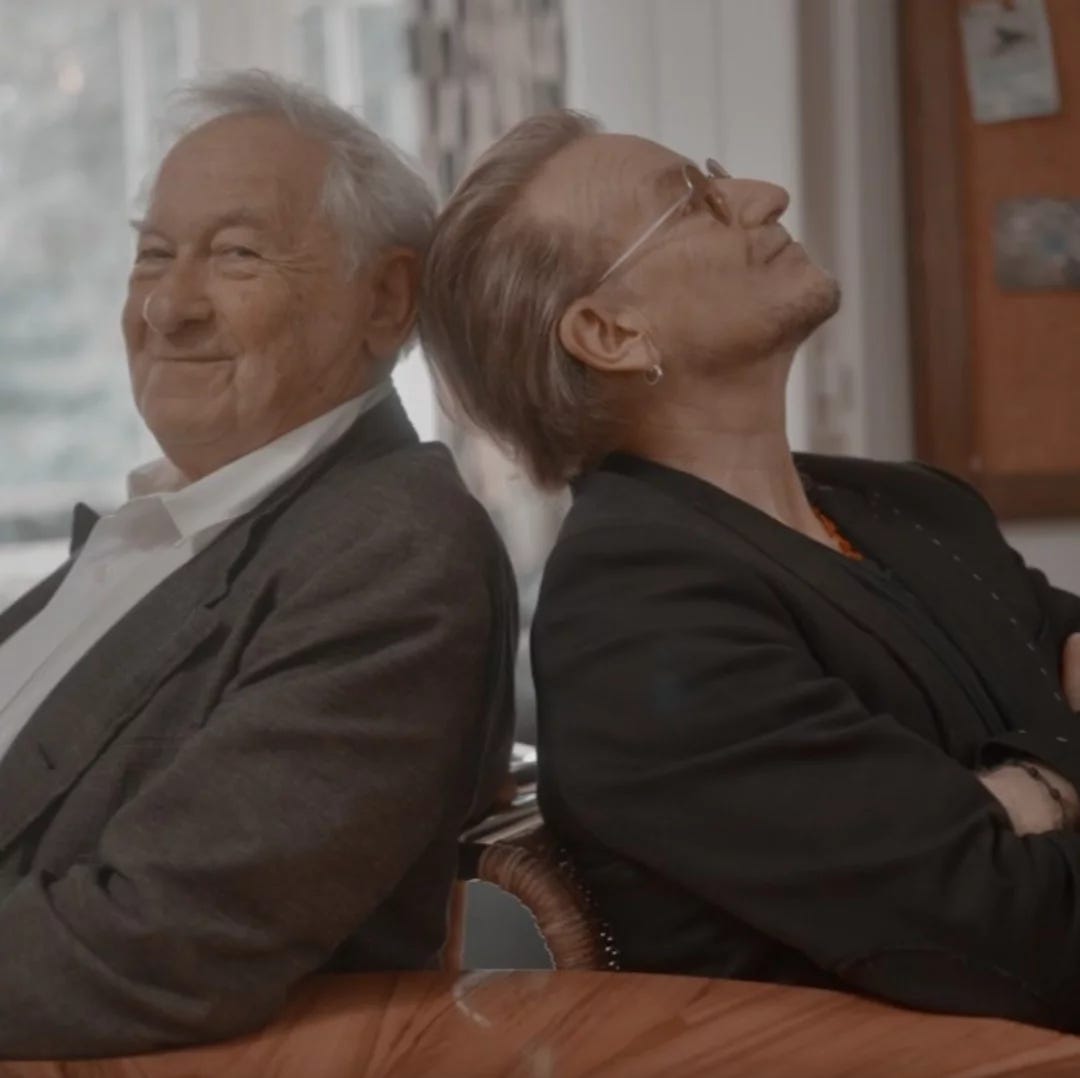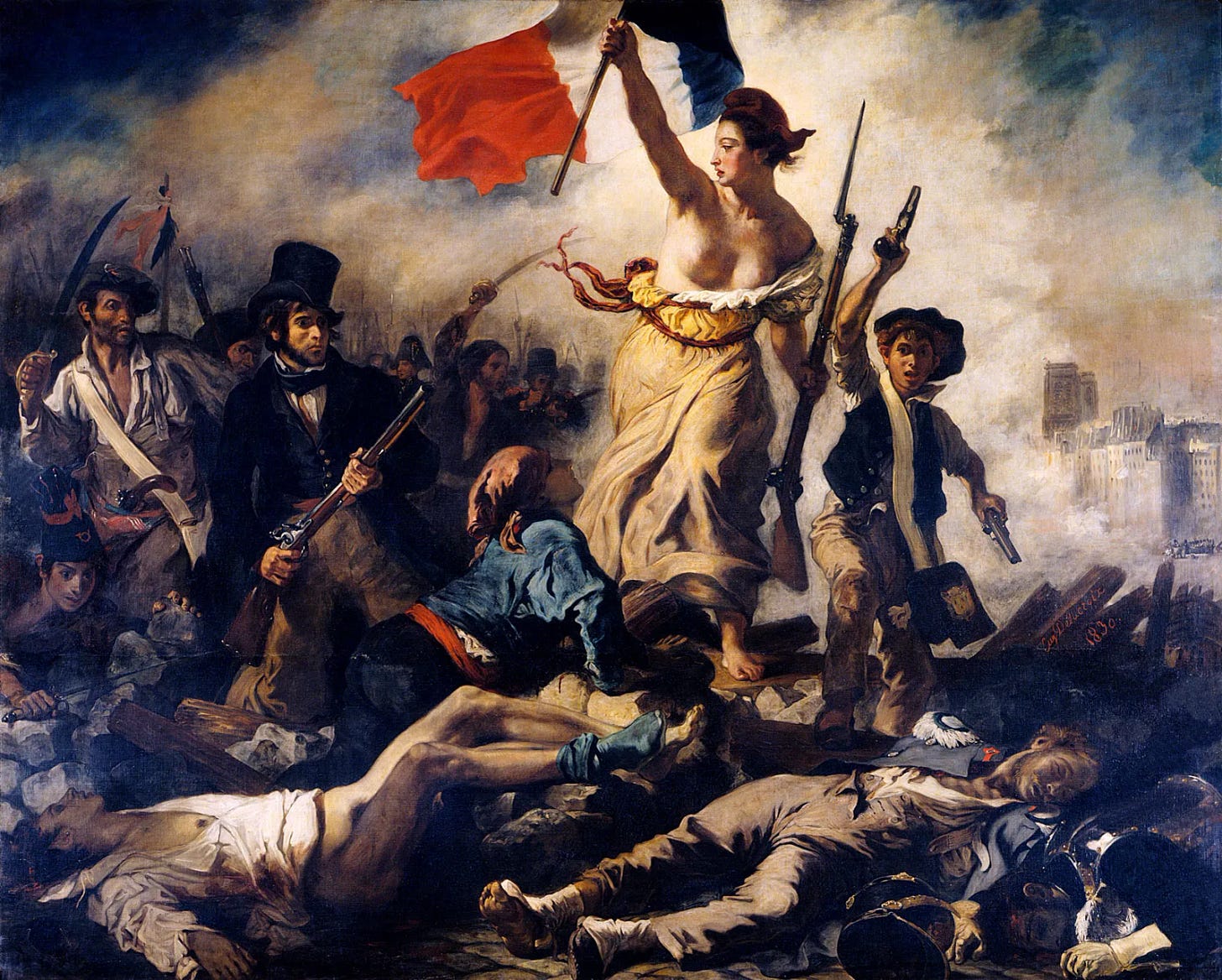Is Simon Schama really a bore?
Or is the television arts programme simply not a place for scholarship?
I was a bit startled by a statement in the Spectator this week, which suggested in this piece that he was, definitively. The writer Michael Henderson seemed to take exception to the fact that firstly, Schama has made the stupid mistake of being on TV all the time, talking about everything from Trump to Spurs, and secondly, that as part of his media dominance there is a new, Schama-helmed, 3-part BBC arts show, The Story of Us, which Henderson considers fatally under-cooked. “Over the years,” writes Henderson, “Schama has been undone by flattery and his telly scholarship has lost its sheen…he is now barely one step up from Frank Bough.”
Simon Schama beside the peerless Humber Bridge, Larkin’s anthology High Windows in hand
That is a bit tough, frankly. Not everything in The Story of Us was on the level of Nationwide. Keen readers of The Arts Stack will know my penchant for anything celebrating the lovely city of Hull, so it was a huge treat to have at least 15 minutes at the top of Episode 3 devoted entirely to Philip Larkin and his environmentally campaigning poem Going, Going, alongside spectacular drone shots of the peerless Humber Bridge. Plus, in the same episode there was equally moving archive footage and some great interviews relating to the historic production of The Cheviot, The Stag and the Black, Black Oil by John McGrath, which in 1973 was performed in village halls and community centres across Scotland by McGrath’s agitprop theatre company 7:84.
“We live in divided times,” announced Schama at the beginning of each episode. The aim of The Story of Us was to look at the divisions and problems unique to British society; and to trace how the arts, post-1945, has articulated them. The history of art is, in other words, the history of political moments and an expression of contemporary struggle. “We can’t look for answers just in the words of politicians,” says Schama. No, but the arguments within the arts world are difficult to put on television, particularly as Schama, doubtless under some BBC dictat to stuff the shows with celebrities, kept on bringing in people like Cliff Richard, Jarvis Cocker and Bono, who at least did suggest that “Culture is always upstream of politics. That’s why culture matters.”
My famous friend Bono
The problem is not Schama’s boringness, or his delight in having famous friends, but the whole notion of “telly scholarship”. I think Henderson was hoping for something which the programme was never going to deliver. Yes, you can pause a programme, or rewind and look at things again, but you are never invited to actually muse on a thought suggested by Schama while watching, because the onward beat of the show is relentless. As it is with most shows. A temporal medium such as television is great for watching a journey, or seeing things unfold, such as in drama, or football; it isn’t ideal if you want to take those things in and let them sit and unfold in your mind. Hence Schama’s subtle points about Larkin’s handling of language and the compression of poetry disappeared as the camera took our attention flying over the Humber Bridge (again).
Perhaps it wasn’t wholly surprising that the chapter on Larkin and the following one on The Cheviot… were so satisfying, as both looked at issues surrounding landscape. Maybe this was a sort of fond revision for Schama, whose book Landscape and Memory (1995), took over 650 pages to reflect on our national mythology and how it reverberates through our green and pleasant land. One of the most celebrated ideas in it was that our love of the oak was borne from the use of these great trees to provide masts for the British Navy and thus rule the waves. It was a very scholarly book.
For a measured analysis of how art is upstream of politics, to paraphrase Bono, you might be better off moving away from Schama and towards T.J.Clark’s new book Those Passions: On Art and Politics. Here, as the blurb has it, this most intellectual of art historians “unpicks the nature of capitalist society and its visual culture.” As Clark, who is Professor Emeritus of the History of Art at the University of California, puts it in the introduction; “I wouldn’t have written so often about art and politics if I had not felt that in the modern period, the two couldn’t avoid one another. For good or ill, in the case of art, politics came to play the role that religion had played previously.”
The first plate in the book: Liberty leading the People, by Delacroix (1830)
I will take quite a long time to read this book. I once read an essay by TJ Clark in the TLS about Pissarro and Cezanne. It is one of the most remarkable pieces on art I have ever read, and it is nothing like anything I could ever have written or ever will write. This is because Clark is an intellectual and I am a journalist.
As the art critic Matthew Collings suggested the other day in a piercing Facebook post, “An intellectual lives by quick thinking, but also [by] having real thoughts, which is different to a journalist. The latter usually as a rule just have the quick thinking. And the only ideas as such that journalists have, are ones about staying afloat. An intellectual’s, by contrast, connect to history. They take in whatever happened then and fit with what’s going on now. Not as blathering chat but as real notions.”
I’ve been thinking about this all month.
Staying afloat! That is what you are helping me to do intellectually and spiritually, by subscribing to The Arts Stack. Thank you. If you liked this post, do indicate so at the bottom of the piece. If you haven’t yet subscribed, please do!








Hey, I caught your recent Note about the (at times, rather thankless) schlep of building subscriber numbers and now, here you are, brilliantly fascinating on Schama and politics and art and journalism and intellectual life (my hunch is you can be both…it’s just that journalism demands one’s intellect to be forced through a different prism, a much more restraining one than writing a book [as per Clark]). And I just don’t know why, when you write such good sense in such a fab way, your numbers aren’t vast.
But…as per @Maria Haka Flokos’s reply…I think the numbers shtick is in one way an impediment and, in another, a completely understandable variable in the cash matrix element of Substack (@Emma Gannon was recently very interesting about the positive aspects of paywalling).
I dig Schama, and I dig Clark. And I think you’re right here that it is the medium, not the man, which plays a very strong and distorting hand. What I don’t dig is the apparent leaning into what looks like ad hominem doing down of Schama by Henderson. Too shallow, too easy and mean a quick win. Schama’s scholarship has not gone, nor has his particular gift for relating that to the rest of us who may not be so scholarly; but the demands of an industry and the reflection of politics in that industry are distorting.
And, as for staying afloat on Substack, I - for one - would dig it if you did.
This has been on my mind a lot too, recently, ever since joining social media. 'Staying afloat,' 'attracting engagement,' becoming 'user friendly and catching attention all in one,' all aspirations of anyone entering this battlefield. Unless one uses it as a private journal. Like writing.
Because all the social media tropes are an impediment to original writing. An author does not cater to their public. They attract it. Trying gimmicks is like undergoing cosmetic surgery in order to win the heart of one who might never have noticed you otherwise. As many do, for the financial benefits are not to be ignored. But that isn't writing. It's marketing. And as such, has nothing to do with words. It's a numbers' game.